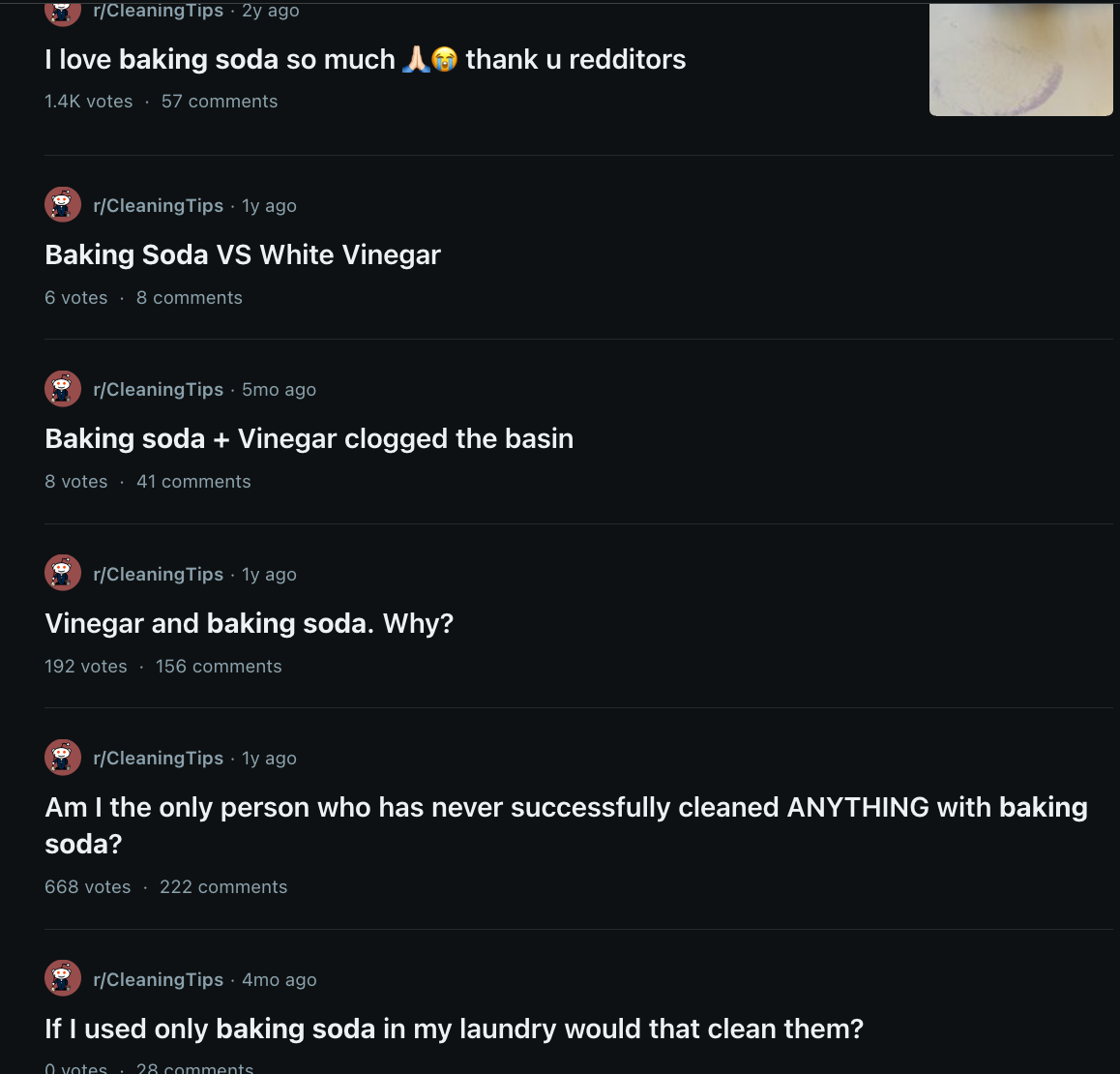Nobody teaches you how to clean: the basics
Most people weren't taught to clean, but cleaning is quite technical work that requires an understanding of basic chemistry. Where were we meant to learn this stuff?

I spend an embarrassing amount of time on cleaning forums.
Not because I love learning new tips and tricks, but because these forums, Facebook groups, Instagram reels, reddit posts, and Tiktoks are full of really, really bad information about cleaning.

Thing is, most people weren't taught to clean. If you've ever lived in a sharehouse, you know most people are semi-feral and were probably raised by wolves. But cleaning is quite technical work that requires an understanding of basic chemistry - where were we meant to learn this stuff?
I can't think of many people whose parents sat them down and explained the difference between a surfactant and an acid-based cleaner. If someone systematically trained you at all, it was probably at your first fast food job.
Really think about it - when did you learn to clean a house? Who taught you? If your parents did take time to teach you the fundamentals, feel free to close the tab and move on with your day.
But if you were raised by wolves, think of this as your inoculation against lifehacks. This is the first in a series about how to use chemistry and efficiency to clean with as minimal effort as possible.
We'll get into the nitty gritty later, but for now, here's the basic chemical principles of cleaning.
Principle No. 1: Water is the enemy
Water brings stains, streaks and mould. Hard water creates limescale.
Anywhere that gets wet regularly, feels grimy.
Wet areas like bathrooms and kitchens are the hardest to clean, take the longest time, and need to be cleaned the most frequently.
In defense of water: it's also the universal solvent. It breaks down chemical bonds. Water alone will clean a lot more than you think, you just need to dry it off when you're done.
Principle No. 2: Chemicals are great
I will physically fight you to put down the bottle of white vinegar.
You don't need to avoid chemicals. You don't need to use green, clean, healthy or non-toxic products. The ingredients in supermarket products have been developed and tested by chemists in a lab. Used as directed on the label, they are safe for household use.
Commercial chemical products are the easiest and fastest way to clean, which is what you want if you're time or energy poor, have executive functioning problems, or are disabled.
Common DIY cleaning ingredients like white vinegar and essential oils are, at best, not as effective as their commercial equivalent, and at worst, hazardous to your skin and airways, especially if you have allergies or asthma.
If you ever find yourself asking "How do I clean a bathroom/carpet/window etc?" the answer is: go to the supermarket and find the product that says it can clean that thing, then do what it says on the label. No matter what TikTok says!
Principle No. 3: The right chemical for the right job
I tell my clients to have just four products ready for me when I arrive at their house.
Bathroom cleaner, toilet cleaner, dishwashing liquid, and floor cleaner.
These four cleaning products are the same two types of active ingredient, surfactants and acids, dressed up with different smells and textures. There are other types of cleaning product, but these two will do 99% of your house.
Surfactants, or detergents, are foamy, soapy degreasing agents. You use them wherever you're going to find grease. Grease mainly comes from food, or humans (yuck). You'll use surfactants to clean kitchen counters, stovetops, and floors where grubby little feet have been.
Acid-based cleaners break down hard water deposits, soap scum and limescale. Remember enemy No. 1, water? If you're cleaning an area that gets wet a lot, you want a cleaning product with an acid-based active ingredient.
Water holds a small amount of dissolved minerals, mostly calcium. When the H20 evaporates, the minerals are left behind, leaving a chalky white cast on your sink or shower screen.
Formic acid, citric acid, and yes, even acetic acid (white vinegar) are common active ingredients that break down these minerals.
Principle No. 4: Let the chemical do the work
If you've tried a supermarket product and it didn't work for you, I fear that was probably user error. Most chemicals need time to go to town. You can't just spray and wipe.
I know there's a literacy crisis, but you gotta actually read the label on your cleaning product, because it will tell you the activation time required for the cleaner to work. Generally, the longer the better.
When I'm cleaning a bathroom, I leave the acid-based product on the surface I'm cleaning for 5-30 minutes. Surfactants and solvents also work better if they're given time to sit.
This is why toilet cleaner is thicker than window cleaner - the gel formulation lets the solution "cling" to the surface of the toilet bowl, giving it time to really get to work on the gunk in there, instead of just washing the expensive active chemicals straight down the drain.
Principle No. 5: Practice safe scrubbing
If chemicals are one half of the cleaning equation, agitation is the other half. You gotta scrub! With that: most commercial cleaning solutions are formulated to be safe on household surfaces, but you can easily fuck your whole situation up by using the wrong scrubber.
Remember Mohs Hardness Scale from high school science?

When you use a sponge, magic eraser, steel wool, brush or blade that is harder than the surface you're cleaning - you're going to scratch that surface.
If you've gone out and bought a whole bunch of new cleaning supplies and are bit unsure, just do a test patch in an inconspicuous area. No-one ever thinks they need to, right up until you pick up the wrong heavy-duty scourer and ruin a client's brand-new microwave.

So if you haven't graduated cleaning university just yet: stick to sponges and scrubbers that say "zero-scratch" or "soft" on the label.
Don't even look at the steel wool. Don't even think about the melamine sponges.
If you get a targeted ad for a pumice block: immediately block the ad, turn off your phone, and leave the house. Just to be safe.
Happily for the eco-minded amongst us, most plant-based walnut and coconut scrubbers are softer than their plastic counterparts, so these are always a good option!
These are the basic principles of cleaning a house: use the proper products, the proper gear, and read the label. If you found this helpful, stay tuned for more in-depth guides on how to tackle specific areas of your house, like the kitchen and bathroom. And if you've got any requests - hit me up in the comments!